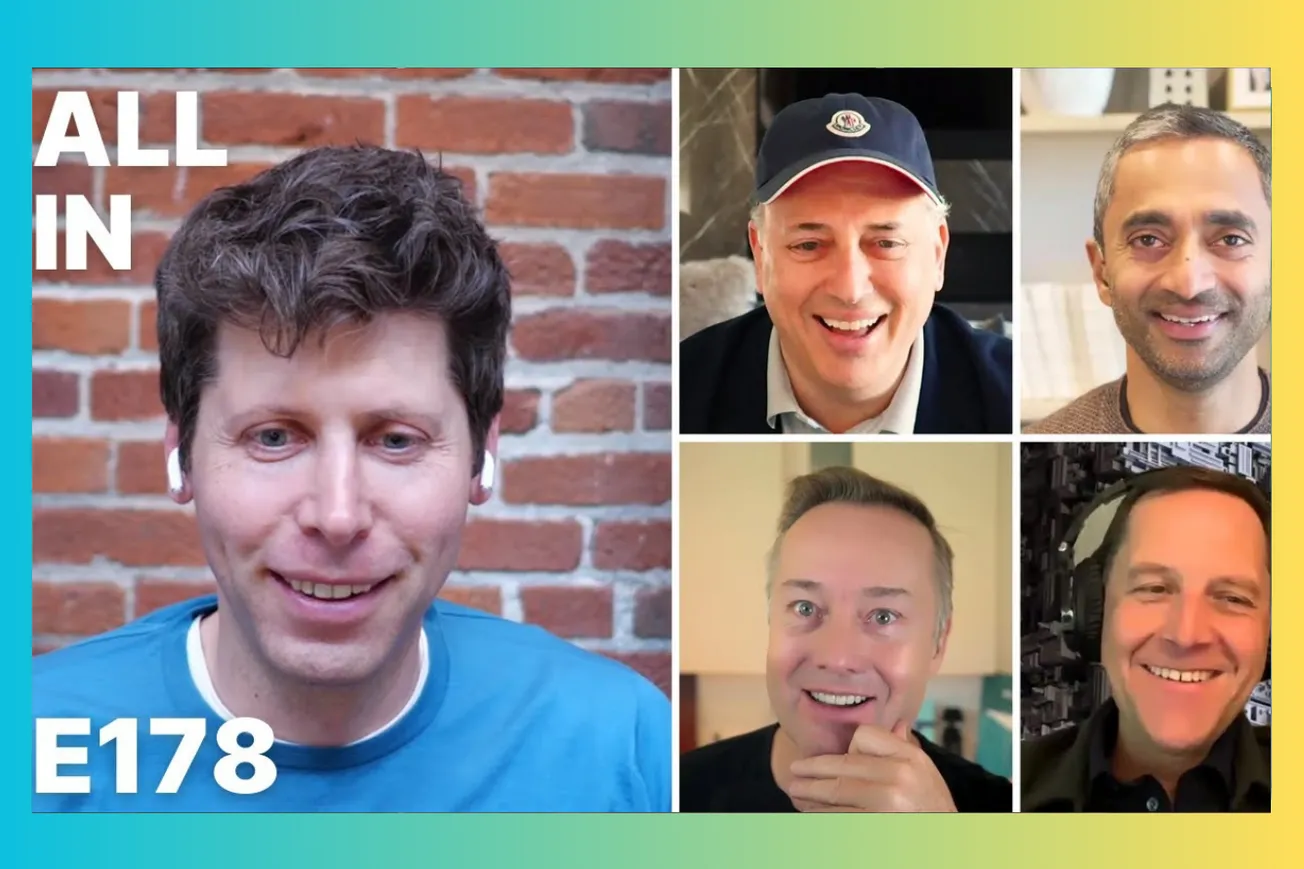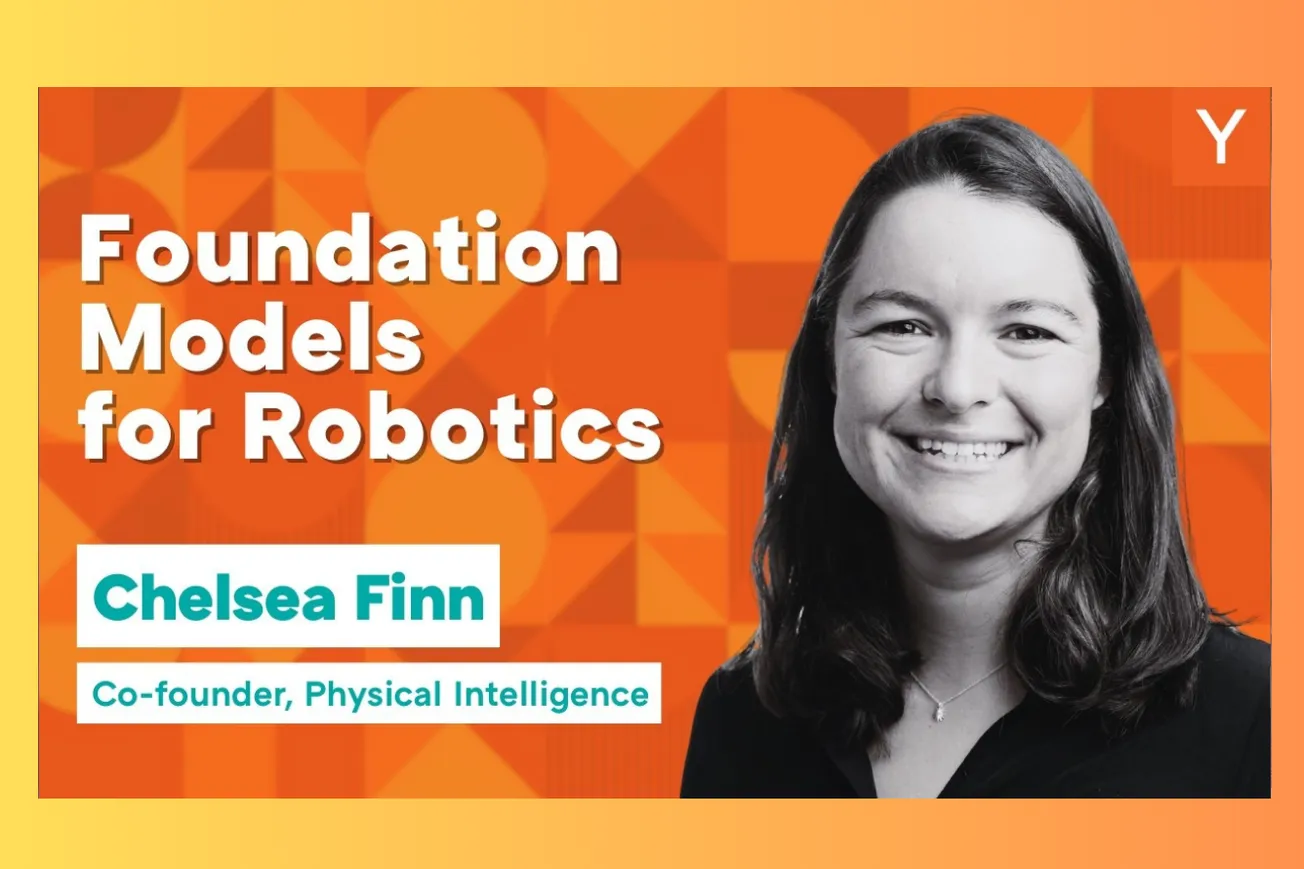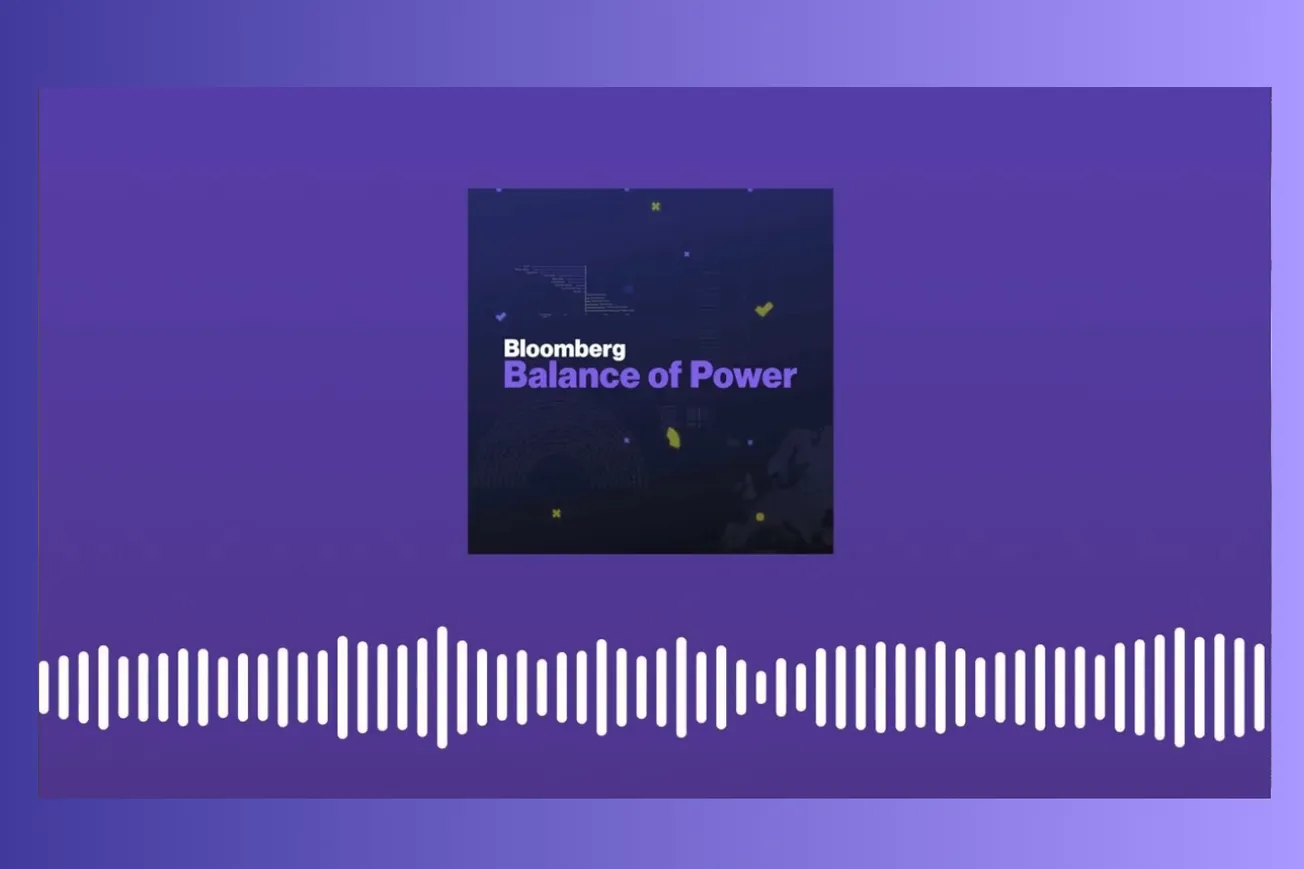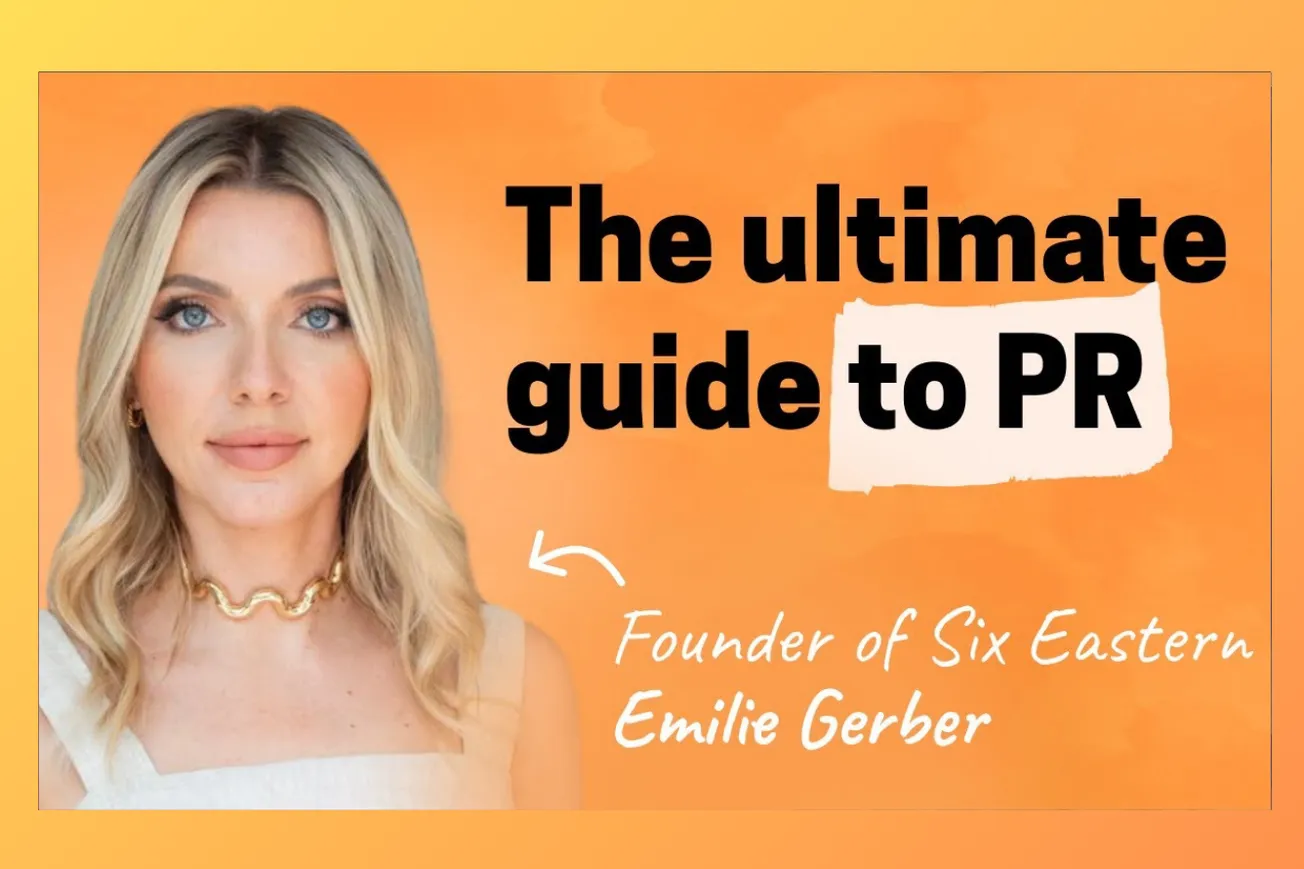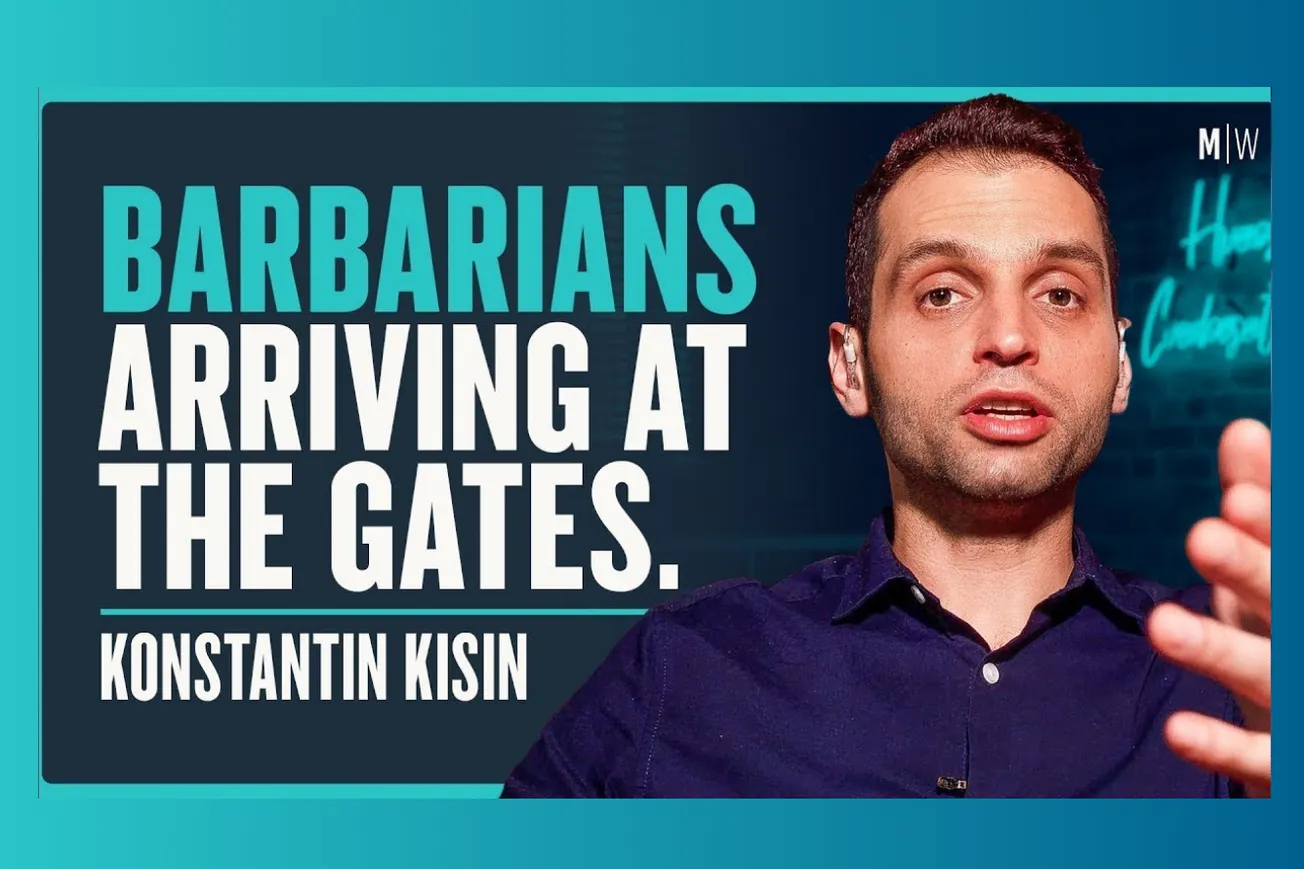Table of Contents
OpenAI CEO discusses the future beyond language models, why he takes no equity, and provides first detailed account of his dramatic firing and rehiring in November 2023.
Sam Altman opens up about OpenAI's roadmap beyond GPT-5, the company's approach to AI safety regulation, and offers unprecedented insights into the board crisis that nearly destroyed the AI leader while revealing his controversial stance on content creator rights.
Key Takeaways
- GPT-5 timeline remains deliberately vague as OpenAI shifts toward continuous model improvement rather than discrete version releases, with reasoning capabilities taking priority over pure language modeling
- OpenAI will keep major models closed-source while potentially releasing smaller on-device models, viewing the future as "useful intelligence layer" rather than just smart weights
- AI regulation should focus on frontier systems capable of "significant global harm" through international oversight, similar to nuclear weapons monitoring, rather than auditing all AI development
- Universal Basic Compute may replace Universal Basic Income, giving people slices of AI productivity they can use, resell, or donate rather than direct cash payments
- Altman was fired via text while in Las Vegas for F1 weekend, with board citing safety concerns but acknowledging his integrity and commitment to the mission despite strategic disagreements
- All external projects including Johnny Ive collaboration and chip initiatives belong to OpenAI, not personal ventures, addressing concerns about conflicted interests and unclear motivations
- Content creators deserve protection for artistic works, but AI learning from factual information follows same principles as human education, with inference-time restrictions more important than training data debates
- Advanced AI assistants will function as "senior employees" who can push back and reason rather than sycophantic agents, maintaining separate identity while understanding deep personal context
- Apple shows signs of innovation stagnation with iPad ads destroying creativity tools and focus on making devices thinner rather than fundamentally better experiences
- Google's AlphaFold 3 represents breakthrough in molecular prediction that could revolutionize drug discovery by modeling all biochemical interactions, but company keeps commercial applications locked to subsidiary
Timeline Overview
- 00:00–02:28 — Welcoming Sam Altman: Introduction covering Sam's history from Sequoia Scouts to Y Combinator presidency to OpenAI co-founding and the ChatGPT breakthrough moment
- 02:28–21:56 — OpenAI's Future Strategy: Discussion of GPT-5 timeline uncertainty, shift toward reasoning over language models, open-source philosophy, and potential iPhone competitor with Johnny Ive
- 21:56–33:01 — AI Agents and App Interfaces: How advanced AI assistants will change software interactions, the importance of shared human-AI interfaces, and voice versus visual interaction paradigms
- 33:01–42:02 — Content Rights and Fair Use: OpenAI's position on training data, why they avoid music, creator compensation models, and the distinction between learning facts versus artistic style replication
- 42:02–52:23 — AI Regulation and Society: Views on California legislation, international oversight frameworks, Universal Basic Compute concept, and results from five-year UBI study
- 52:23–1:05:33 — OpenAI Board Crisis Deep Dive: First detailed account of November firing, board dynamics, equity compensation decisions, external project ownership, and company organization principles
- 1:05:33–1:10:38 — Post-Interview Analysis: Hosts discuss Sam's revelations about reasoning models, economic implications, corporate structure insights, and biological AI applications
- 1:10:38–1:19:06 — All-In Summit Announcements: Guest reveals including Elon Musk and Mark Cuban, college protest commentary, and constitutional free speech principles
- 1:19:06–1:29:41 — Apple Innovation Crisis: Analysis of controversial iPad ad, Warren Buffett selling $20 billion in shares, innovation stagnation, and missed opportunities in new categories
- 1:29:41–END — Google's AlphaFold 3 Breakthrough: Scientific implications of molecular prediction advances, drug discovery applications, aging research potential, and Google's commercial strategy
GPT-5 Evolution: Beyond Version Numbers
OpenAI's approach to model releases is fundamentally shifting away from discrete version numbers toward continuous improvement, with reasoning capabilities emerging as the critical breakthrough beyond language modeling. Altman deliberately avoided committing to GPT-5 timelines while revealing the company's strategic pivot toward more sophisticated AI architectures.
Why won't OpenAI commit to a GPT-5 release date? Altman's response revealed strategic thinking beyond marketing cycles: "I think that's like a better hint of what the world looks like where it's not the like 1 2 3 4 5 six seven but you just use an AI system and the whole system just gets better and better fairly continuously."
- Continuous Training Philosophy: Rather than training massive models from scratch, OpenAI explores keeping models in constant training states, updating capabilities without discrete version releases
- Reasoning Over Language: Multiple references to reasoning capabilities suggest OpenAI views this as the next major breakthrough, moving beyond pure language prediction toward genuine problem-solving abilities
- Architecture Diversification: Different models for different purposes, with Sora video generation requiring completely different architectures than language models, indicating specialized rather than unified approaches
- Open Source Strategy: Smaller on-device models may be open-sourced while frontier models remain closed, with Altman expressing personal interest in "open source model that runs on my phone"
What does "useful intelligence layer" mean for competitors? Altman distinguished between creating "smartest set of weights" versus building comprehensive AI systems: "What we're trying to make is like this useful intelligence layer for people to use and a model is part of that... but there's a lot of other work around the whole system that's not just the model weights."
This suggests OpenAI's moat extends beyond model quality to infrastructure, safety systems, and user interfaces that integrate multiple AI capabilities. The implication challenges pure open-source competitors who focus only on matching model performance without addressing the broader system requirements.
AI Assistants as Senior Employees, Not Servants
Altman's vision for advanced AI assistants differs markedly from current voice assistants or chatbots, emphasizing autonomous reasoning and pushback capabilities rather than compliance-focused interactions. The distinction reveals OpenAI's approach to building AI that enhances rather than replaces human judgment.
How will AI assistants differ from current Siri-style interactions? Altman outlined a compelling alternative to existing paradigms: "I want a great senior employee... they'll push back on me they will sometimes not do something I ask or they sometimes will say like I can do that thing if you want but if I do it here's what I think would happen."
- Reasoning-Based Pushback: AI assistants that can challenge user requests and provide alternative perspectives, functioning more like trusted advisors than obedient tools
- Contextual Understanding: Always-on systems with comprehensive personal context that anticipate needs without explicit instructions, maintaining persistent awareness of user preferences and goals
- Interface Flexibility: Shared human-AI interfaces where users can watch AI interactions and provide real-time feedback, maintaining transparency and control over autonomous actions
- Multimodal Integration: Combination of voice, vision, and traditional interfaces depending on task requirements rather than forcing single interaction paradigms
Why does this approach matter for app developers? The vision suggests fundamental changes to software architecture where apps must accommodate both human and AI users seamlessly. Altman noted: "I'm actually very interested in designing a world that is equally usable by humans and by AIs."
This creates challenges for current app-based ecosystems built around human interfaces, potentially favoring companies that can adapt to AI-first interaction patterns while maintaining human usability for oversight and intervention.
Content Creator Rights: Facts vs. Artistic Expression
OpenAI's approach to training data and creator rights reflects nuanced thinking about different types of intellectual property, with the company making distinctions between factual learning and artistic style replication that mirror human creative processes while avoiding the complex music industry entirely.
Where does OpenAI draw the line on content usage? Altman provided the clearest articulation yet of the company's position: "If you go read a bunch of math on the internet and learn how to do math that I think seems unobjectionable to most people... I think the other extreme end of the spectrum is Art and maybe even more specifically... doing it's a system generating art in the style or the likeness of another artist."
- Factual Knowledge Exception: Learning mathematical concepts, scientific principles, and general human knowledge treated as uncontroversial fair use, similar to human education processes
- Artistic Style Protection: Direct replication of specific artist styles or likenesses viewed as potentially problematic, with inference-time restrictions more important than training data sources
- Music Industry Avoidance: OpenAI has "made the decision not to do music" due to complex rights questions and unclear boundaries around musical style and structure
- Inference-Time Focus: Future debates will center on what AI systems do with information at generation time rather than what data they were trained on
How does this compare to human creative learning? When challenged about the difference between AI and human learning processes, Altman acknowledged the parallel while maintaining distinctions around commercial exploitation: "I wasn't trying to make that point because I agree like in the same way that humans are inspired by other humans... if you say generate me a song in the style of Taylor Swift... that's a different case."
The position suggests OpenAI views the act of learning from creative works as legitimate while restricting explicit style mimicry through prompt engineering and output filtering, similar to how human artists learn techniques without directly copying copyrighted works.
AI Regulation: International Oversight for Frontier Systems
Altman's regulatory philosophy focuses narrowly on frontier AI systems capable of causing global harm rather than broad restrictions on AI development, advocating for international oversight mechanisms similar to nuclear weapons monitoring while expressing concern about state-by-state approaches.
What specific capabilities trigger regulatory oversight? Altman identified clear thresholds for intervention: "Models that are technically capable not even if they're not going to be used this way of recursive self-improvement... or of autonomously designing and deploying a bioweapon... we should have safety testing on the outputs at an international level."
- Recursive Self-Improvement: AI systems capable of improving their own capabilities without human intervention represent a critical threshold requiring oversight
- Autonomous Weapons Design: Models that could independently design and deploy biological or other weapons systems warrant international monitoring
- Cost-Based Thresholds: Suggested regulatory lines based on training costs (e.g., $10 billion or $100 billion) to avoid burdening startups while capturing truly powerful systems
- Output Testing Focus: Emphasis on testing what models can do rather than auditing source code or training processes, similar to airplane safety certification
Why does Altman oppose California's AI legislation? The concern centers on premature specificity and state-by-state fragmentation: "The way that the stuff is written you read it you're like going to pull your hair out because... in 12 months none of this stuff's going to make sense anyway."
This reflects broader Silicon Valley concerns about regulatory capture and technical ignorance among policymakers, with Altman preferring agency-based approaches that can adapt to technological changes rather than rigid statutory requirements that become obsolete quickly.
Universal Basic Compute: Productivity Over Cash
Altman's evolution from Universal Basic Income advocacy toward "Universal Basic Compute" reflects lessons from OpenAI's five-year UBI study and changing perspectives on how AI will transform economic value creation, suggesting ownership of AI productivity rather than redistribution of traditional wealth.
How would Universal Basic Compute work in practice? Altman outlined a compelling alternative to cash transfers: "Everybody gets like a slice of gpt7 compute and they can use it they can resell it they can donate it to somebody to use for cancer research but what you get is not dollars but this like productivity slice."
- Productivity Ownership: Direct access to AI capabilities rather than money derived from AI-generated wealth, giving individuals control over valuable computational resources
- Market Mechanisms: Ability to trade, sell, or donate compute allocations creates market-based distribution while ensuring universal access to basic AI capabilities
- Use Case Flexibility: Recipients can apply AI capabilities to their specific needs rather than receiving predetermined cash amounts that may not reflect AI's actual value
- Research Applications: Donation mechanisms allow individuals to contribute computing power to scientific research or other public goods
What did the UBI study reveal? While results haven't been fully released, Altman's shift in thinking suggests traditional cash transfers may be less effective than direct productivity access: "Now that we see some of the ways that AI is developing I wonder if there's better things to do than the traditional conceptualization of UBI."
This evolution reflects growing understanding that AI's primary impact will be on productivity rather than just job displacement, suggesting policy responses should focus on ensuring broad access to AI capabilities rather than compensating for their absence.
Board Crisis Revelation: Safety Concerns vs. Strategic Disagreements
Altman provided the first detailed account of his November 2023 firing and rehiring, revealing the human drama behind one of tech's most shocking corporate crises while defending the board members' integrity despite fundamental disagreements about OpenAI's direction.
What actually happened during the board crisis? Altman's account reveals the chaotic timeline: "I was fired I was... I talked about coming back I kind of was a little bit unsure at the moment about what I wanted to do because I was very upset... I was in a hotel room in Vegas for F1 weekend."
- Firing Process: Received text night before, then phone call with board, creating immediate confusion and disbelief about the decision
- Initial Response: Spent hours in "absolute state" trying to understand the situation before deciding to pursue independent AGI research
- Negotiation Period: Board members reached out about returning, leading to several days of intense discussions and eventual resolution
- Employee Support: Near-universal employee threat to leave for Microsoft created pressure for board resolution, demonstrating organizational loyalty
Were there legitimate safety concerns or business disputes? Altman balanced criticism with respect for board motivations: "I have never once doubted their integrity or commitment to the shared mission of safe and beneficial AGI... Do I think they made good decisions in the process of that or know how to balance all the things OpenAI has to get right? No."
Why doesn't Altman have equity in OpenAI? The decision reflects the original nonprofit structure rather than personal choice: "The original reason was just like the structure of our nonprofit... our board needed to be a majority of disinterested directors." Altman acknowledged this creates perception problems: "If I could go back yeah I would just say like let me take equity and make that super clear."
External Projects: All Roads Lead to OpenAI
Altman clarified for the first time that external projects including the Johnny Ive collaboration and chip initiatives belong to OpenAI rather than personal ventures, addressing persistent questions about conflicts of interest and unclear motivations behind his diverse business activities.
Which projects belong to OpenAI versus Sam personally? Altman provided crucial clarification: "The things like you know device companies or if we were doing some chip fab company it's like those are not Sam projects those would be like OpenAI would get that equity."
- Device Development: Johnny Ive collaboration and any consumer hardware projects are OpenAI initiatives, not personal ventures
- Chip Infrastructure: Semiconductor and fab investments flow through OpenAI rather than personal investment vehicles
- Public Perception Gap: Lack of formal announcements created false impression of personal side projects competing with OpenAI interests
- Conspiracy Theory Generation: Absence of equity stake in OpenAI paradoxically created more suspicion about alternative profit motives
How does this address conflict of interest concerns? The revelation eliminates the primary source of board tension around competing loyalties: "It would at least type check to everybody... I'd still be doing it because I really care about AGI and think this is like the most interesting work in the world but it would at least type check."
This structure means Altman's various external activities actually serve OpenAI's strategic interests rather than creating competing demands on his attention or loyalty, though the lack of public clarity generated unnecessary controversy and speculation.
Apple's Innovation Crisis: Crushing Creativity for Thinness
Apple's controversial iPad advertisement destroying creative tools with a hydraulic press symbolizes deeper innovation stagnation as the company focuses on incremental improvements rather than category-defining breakthroughs, while Warren Buffett's massive stock sale signals institutional skepticism about future growth.
Why did Apple's "Crush" ad generate such negative reactions? The imagery violated Apple's brand identity around empowering creativity: "There's something about... destroying all those creative tools that Apple is supposed to represent it definitely seemed very off-brand for them."
- Symbolic Destruction: Using hydraulic press to crush musical instruments, art supplies, and creative tools contradicted Apple's core message of enabling human creativity through technology
- Innovation Void: Advertisement highlighted iPad's thinness rather than functional improvements, suggesting exhausted innovation pipeline focused on marginal hardware refinements
- Brand Disconnect: Message implied technology replaces rather than enhances human creativity, fundamentally misunderstanding Apple's relationship with creative professionals
- Cultural Tone Deafness: Failed to recognize growing anxiety about AI and automation replacing human creative expression
What does Buffett's $20 billion Apple stock sale signal? The divestment suggests institutional skepticism about Apple's growth trajectory: "He's so clever with words he's like you know this is an incredible business that we will hold forever most likely then it turns out that he sold $20 billion worth of Apple shares."
Why can't Apple innovate beyond incremental improvements? The consensus points to organizational paralysis around major initiatives: "The problem is... you kind of become afraid of your own shadow... Apple hasn't bought anything more than 50 or hundred million dollars and so the idea that all of a sudden they come out of the blue and buy a $102 billion company... is just totally doesn't stand logic."
Apple's innovation challenges stem from success-induced risk aversion, where massive cash reserves paradoxically limit bold moves due to lack of acquisition experience and fear of major failures that could impact stock performance.
Google's AlphaFold 3: Molecular Prediction Revolution
Google's AlphaFold 3 represents a breakthrough in predicting molecular interactions that could revolutionize drug discovery, aging research, and biochemistry by modeling how proteins, drugs, and small molecules interact in three-dimensional space, though the company maintains tight control over commercial applications.
How significant is AlphaFold 3's advance over previous versions? Freeberg emphasized the transformative potential: "We can now actually model that with software... we can take that drug we can create a three-dimensional representation of it using the software and we can model how that drug might interact with all the other cells."
- Comprehensive Molecular Modeling: Expands beyond protein folding to include all small molecules and their interactions, creating complete biochemical simulation capabilities
- Drug Discovery Acceleration: Can predict off-target effects and side effects in software before expensive clinical trials, potentially reducing drug development costs and timelines
- Aging Research Applications: Could accelerate discovery of Yamanaka factor combinations for cellular reprogramming and age reversal through systematic molecular simulation
- Commercial Control: Google keeps sophisticated capabilities locked in Isomorphic Labs subsidiary while providing limited web-based viewer for academic research
What are the broader implications for human health? The platform enables comprehensive biochemical engineering: "We can now simulate that so with this system one of the things that this Alpha 3 can do is predict what molecules will bind and promote certain sequences of DNA."
Why did Google keep this closed-source? Unlike earlier AlphaFold releases, Google maintains commercial control through subsidiary structure, signaling recognition of the technology's economic value and competitive advantage in pharmaceutical partnerships.
The decision reflects broader AI industry trend toward monetizing breakthrough capabilities rather than contributing to open scientific commons, with Google positioned to capture significant value from drug development applications.
Common Questions
Q: Will GPT-5 be released in 2024 as previously reported?
A: Altman deliberately avoided confirming timelines, suggesting OpenAI is moving toward continuous model improvement rather than discrete version releases.
Q: How will advanced AI assistants differ from current voice interfaces?
A: They will function as "senior employees" who can push back on requests and provide reasoning rather than blindly following commands.
Q: What's OpenAI's position on training AI models using copyrighted content?
A: Learning factual information is considered fair use similar to human education, but generating content in specific artistic styles raises different concerns.
Q: Why doesn't Sam Altman have equity in OpenAI despite being CEO?
A: Original nonprofit structure required majority of "disinterested directors" on board, though he acknowledges this creates perception problems.
Q: Are Sam's external projects like the Johnny Ive collaboration personal ventures?
A: All major projects including device development and chip initiatives belong to OpenAI, not personal side businesses.
Q: What type of AI regulation does OpenAI support?
A: International oversight for frontier systems capable of recursive self-improvement or autonomous weapons design, rather than broad restrictions on all AI development.
Conclusion
The conversation reveals OpenAI at a critical juncture between research organization and commercial powerhouse, with Altman navigating complex tensions around safety, competition, and the responsible development of potentially transformative technology. His candid discussion of the board crisis and strategic decisions provides unprecedented insight into the leadership challenges of building artificial general intelligence while maintaining public trust and organizational coherence.
The interview demonstrates how quickly AI capabilities are advancing beyond current regulatory frameworks while highlighting the importance of thoughtful approaches to both technological development and governance structures that can adapt to rapidly changing capabilities.

